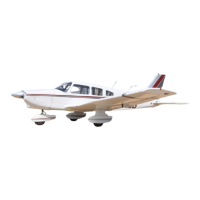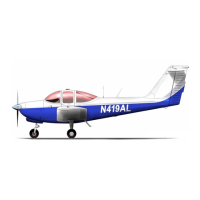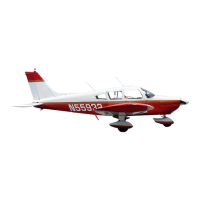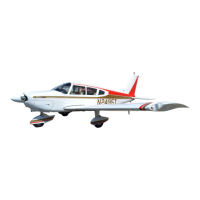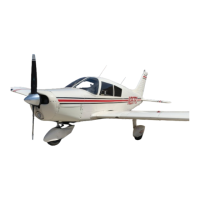THE NEW PIPER AIRCRAFT, INC.
PA-32-301FT / 301XTC
MAINTENANCE MANUAL
PAGE 1
Jun 1/03
4D5
51-00-00
GENERAL
This airplane has an all metal semi-monocoque structure. The fuselage is constructed of bulkheads,
stringers and stiffeners, to which all of the outer skin is riveted. Crew entrance door is located on right
side of fuselage above wing. Forward baggage door is forward of the wing on the right side of fuselage,
just aft of firewall. Passenger entrance door is provided on left side of fuselage aft of wing and is
adjacent to the aft baggage door. Wings and empennage are all metal, full cantilever semi-monocoque
type construction with removable tips.
Structural repair methods used must be in accordance with regulations set forth in FAA Advisory Circular
43-13-1, latest revision. To assist in making repairs and/or replacements, Figure 1 identifies type and
thickness of various skin material used.
WARNING: NO ACCESS HOLES ARE PERMITTED IN ANY CONTROL SURFACE. USE OF PATCH
PLATES FOR REPAIRS OF ALL MOVABLE TAIL SURFACES IS PROHIBITED. USE OF
ANY FILLER MATERIAL NORMALLY USED FOR REPAIR OF MINOR DENTS AND/OR
MATERIALS USED FOR FILLING INSIDE OF SURFACES IS ALSO PROHIBITED ON ALL
MOVABLE TAIL SURFACES.
Never make a skin replacement or patch plate from material other than type of original skin, or of a
different thickness than original skin. Repair must be as strong as original skin. However, flexibility must
be retained so surrounding areas will not receive extra stress.
1. Fiberglass Repairs
Repair procedures in this manual will describe methods for repair of Fiberglass Reinforced
Structures; Fiberglass Touch-Up and Surface Repairs such as blisters, open seams, delamination,
cavities, small holes and minor damages that have not harmed fiberglass cloth material; and,
Fiberglass Fracture and Patch Repairs such as puncture, breaks and holes that have penetrated
through structure and damaged fiberglass cloth. A repair kit, part number 766-222 will furnish
necessary material for such repairs, and is available through Piper Aircraft Distributorrs.
NOTE: Very carefully follow resin and catalyst mixing instructions furnished with repair kit.
A. Fiberglass Touch-Up and Surface Repairs
(1) Remove wax, oil and dirt from around damaged area with acetone, Methylethylketone or
equivalent and remove paint to gel coat.
(2) Damaged area may be scraped with a fine blade knife or a power drill with a burr attachment to
roughen bottom and sides of damaged area. Feather edge surrounding scratch or cavity. Do
not undercut edge. (If scratch or cavity is shallow and penetrates only surface coat, continue to
para h, below.)
(3) Pour a small amount of resin into a jar lid or on a piece of cardboard, just enough to fill area
being worked on. Mix an equal amount of milled fiberglas with resin, using a putty knife or
stick. Add catalyst, according to kit instruction, to resin and mix thoroughly. A
hypodermic needle may be used to inject gel into small cavities not requiring fiberglas millings
mixed with gel.
(4) Work mixture of resin, fibers and catalyst into damaged area, using sharp point of a putty knife
or stick to press it into bottom of hold and to puncture any air bubbles which may be present.
Fill scratch or hole above surrounding undamaged area about 1/16 inch.
(5) Lay piece of cellophane or waxed paper over repair to cut off air and start cure of gel
mixture.
